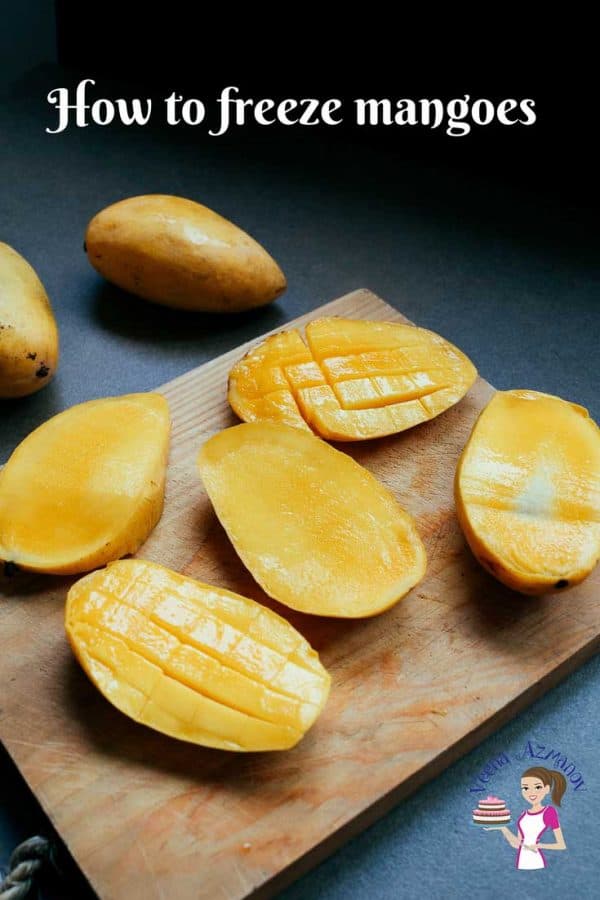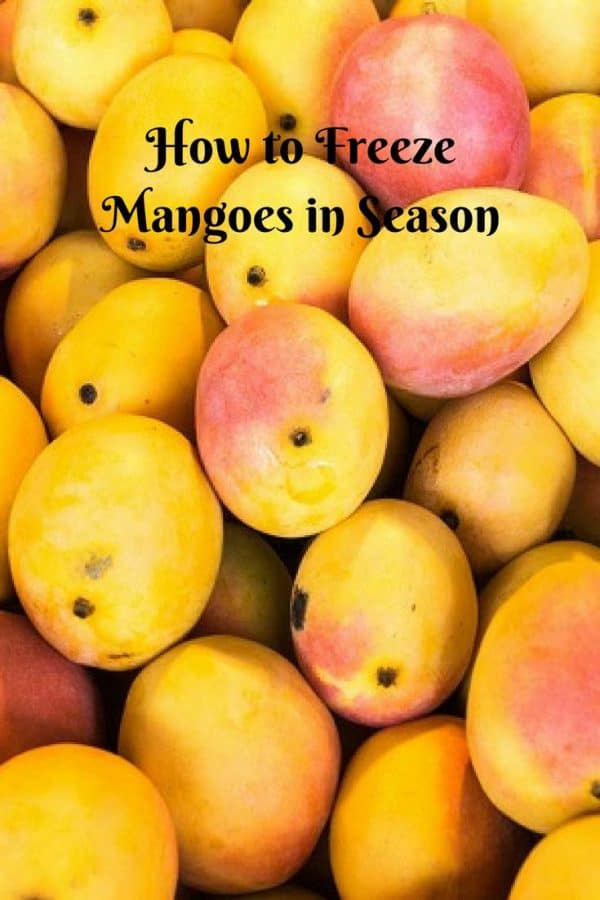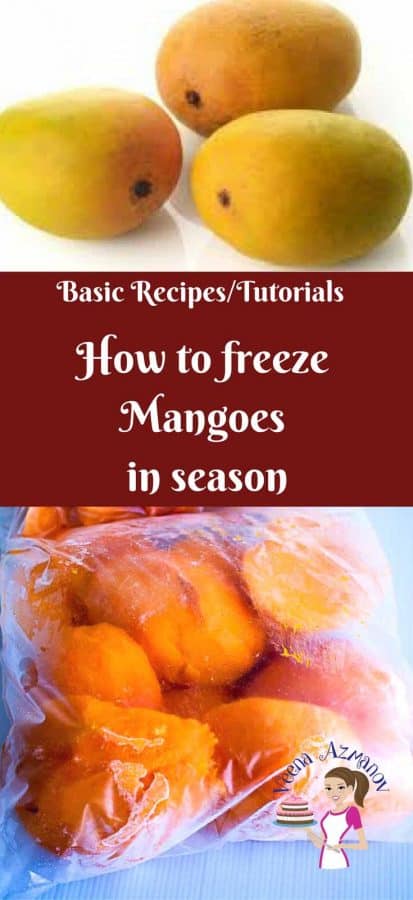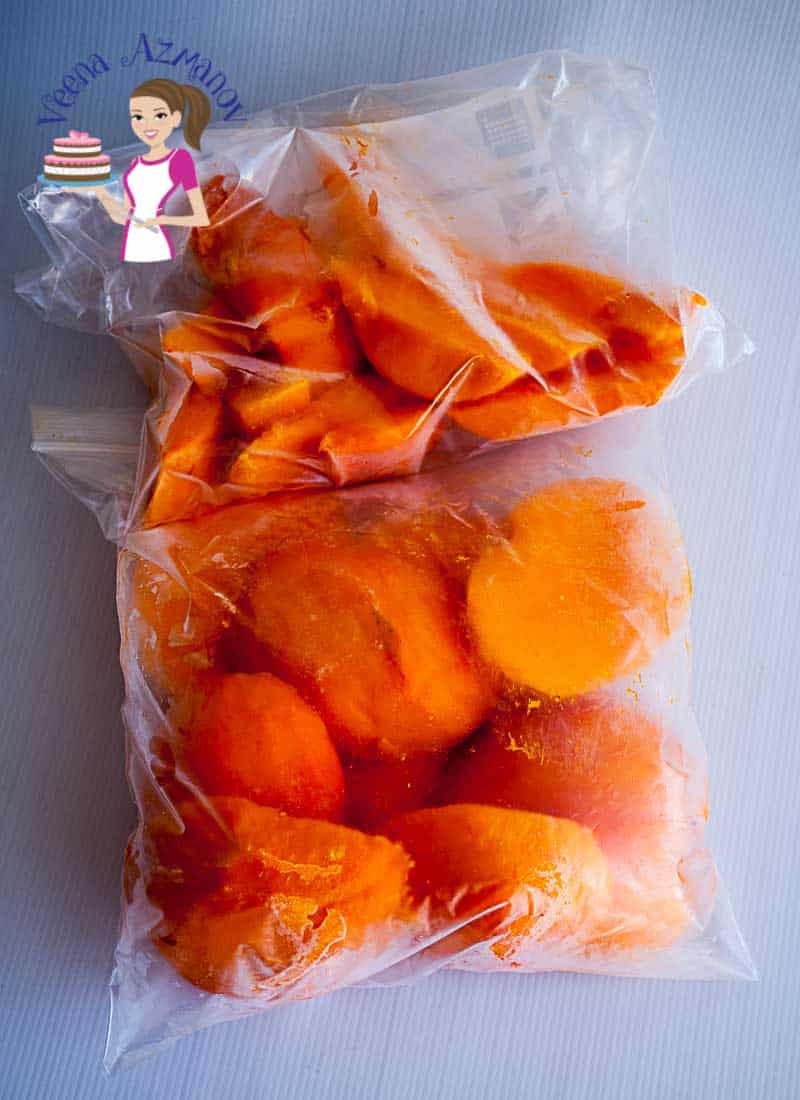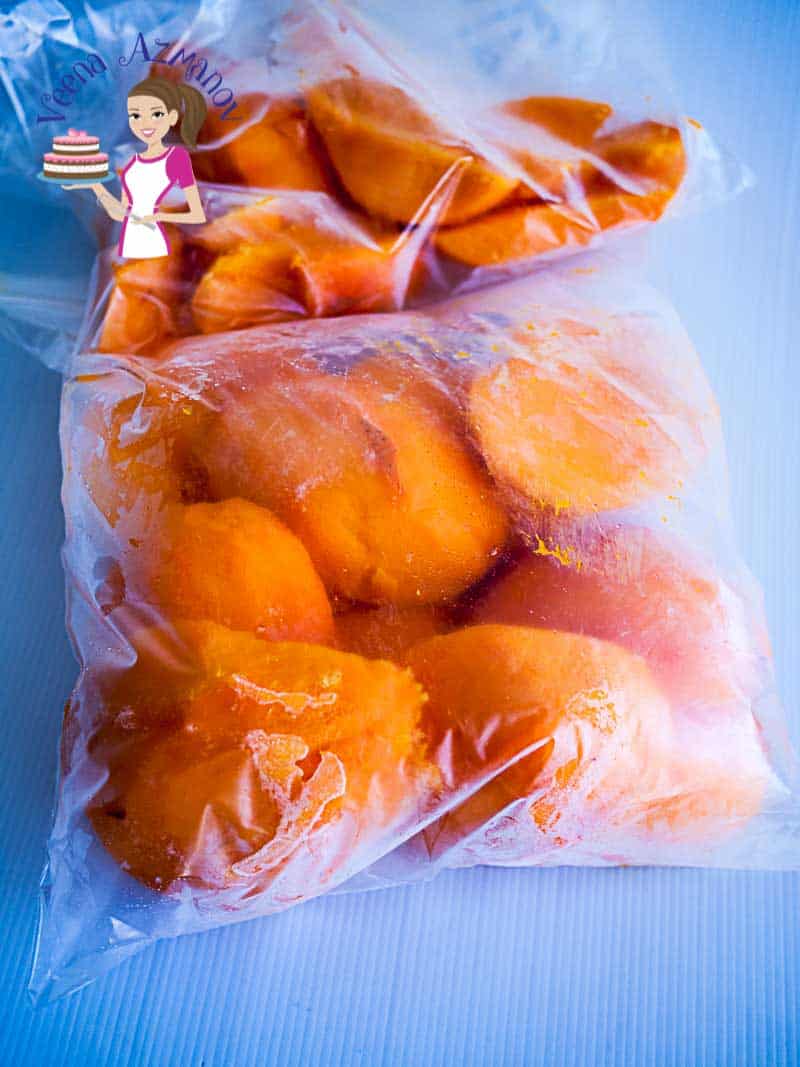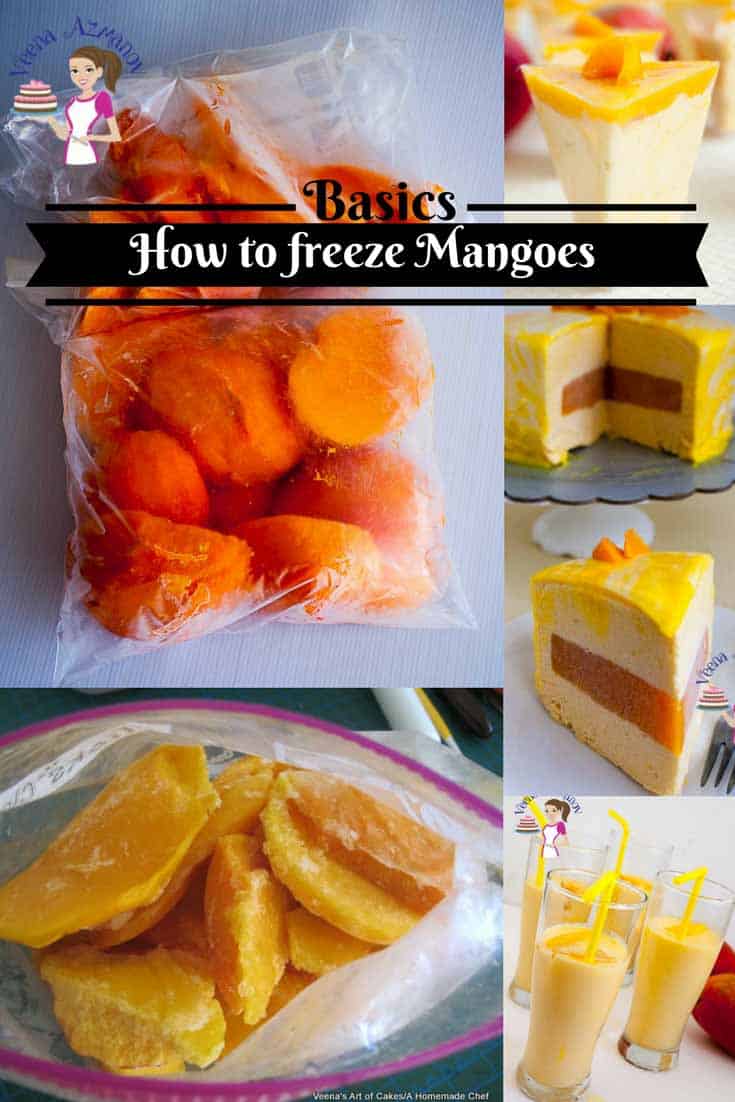Freezing fresh fruits in season is a fantastic way to preserve their flavor and nutrients, ensuring you have access to delicious, ripe fruit all year round. Whether it’s juicy berries, sweet peaches, or tangy citrus fruits, freezing allows you to enjoy these treats even when they’re out of season. Simply wash and dry the fruits, then freeze them in a single layer on a baking sheet before transferring them to a freezer-safe container or bag. Use the frozen fruits in smoothies, baked goods, or as a topping for yogurt or oatmeal, bringing a taste of summer to your table no matter the season. Mangoes are tropical stone fruits renowned for their sweet, juicy flesh and distinctive flavor. Believed to have originated in South Asia, mangoes are now grown in many tropical and subtropical regions worldwide. Their appeal lies in their rich, tropical taste, which is a delightful mix of sweetness and tartness, often described as a blend of peach, pineapple, and a hint of citrus. The soft, juicy texture of ripe mangoes adds to their allure, making them a favorite ingredient in many dishes, from salsas and salads to smoothies, desserts, and even savory dishes. They have a short season primarily due to their sensitivity to cold temperatures. They thrive in warm, tropical climates and require specific conditions to flower and fruit. Additionally, mango trees are susceptible to various pests and diseases, which can also affect the length of their growing season. Despite their short season, mangoes remain a highly sought-after fruit, prized for their unique flavor, versatility, and nutritional value. They are rich in vitamins A and C, as well as dietary fiber and antioxidants, making them not only delicious but also a healthy addition to your diet.
Freezing mangoes is a great idea for several reasons:
Preserves Freshness: Freezing preserves their freshness, flavor, and nutrients, allowing you to enjoy them even when they’re out of season. Convenience: Frozen fruit are convenient to have on hand for quick and easy use in smoothies, desserts, or as a topping for yogurt or oatmeal. Reduces Waste: Freezing is a great way to reduce food waste by preserving excess fruit that may otherwise spoil. Cost-Effective: Freezing your own fruit when they’re in season, and typically less expensive, allows you to enjoy them at a lower cost throughout the year. Versatility: Frozen fruit can be used in a variety of dishes, from sweet to savory, adding a tropical twist to your meals. Year-Round Availability: Freezing ensures that you have access to this delicious fruit year-round, regardless of the season.
How do you freeze fresh fruits?
There are several ways to freeze fresh fruits, depending on the type of fruit and how you plan to use it. Here are some common methods:
Whole Fruit: Some fruits, like berries or grapes, can be frozen whole. Simply wash and dry the fruit, then place them in a single layer on a baking sheet and freeze until solid. Once frozen, transfer the fruit to a freezer-safe container or bag. Sliced or Chopped: For fruits like bananas, peaches, or mangoes, it’s best to slice or chop them before freezing. Lay the pieces in a single layer on a baking sheet and freeze until solid, then transfer to a container or bag. Pureed: Some fruits, like strawberries or kiwi, can be pureed before freezing. Simply blend the fruit until smooth, then pour into ice cube trays or freezer-safe containers for individual portions. Syrup Pack: This method works well for fruits that tend to brown, like apples or peaches. Make a syrup by dissolving sugar in water, then cool. Pack the fruit into containers and cover with the syrup before freezing. Sugar Pack: Similar to the syrup pack, you can mix sliced fruit with sugar before freezing. This helps preserve the fruit’s color and texture. Blanching: For fruits like peaches or apricots, blanching can help preserve their texture. Dip the fruit in boiling water for a few seconds, then plunge them into ice water to stop the cooking process. Peel, pit, and slice the fruit before freezing.
Regardless of the method you choose, be sure to label your containers with the date and type of fruit to keep track of what you have in your freezer.
Step-by-step: How to freeze mangoes
Sliced or Cubed
Wash the mango under cool water to remove any dirt or residue. Use a sharp knife to slice off both ends of the mango. Peel the skin off the mango using a vegetable peeler or a knife, following the curve of the fruit. Slice the mango lengthwise on either side of the pit to create two large halves. Cut the mango flesh into slices or cubes, depending on your preference. Arrange the mango slices or cubes on a baking sheet lined with parchment paper, making sure they are not touching. Place the baking sheet in the freezer and freeze the mango until solid, about 1-2 hours. Transfer the slices or cubes to a freezer-safe bag or container, and store them in the freezer.
Pureed
Wash the mango under cool water to remove any dirt or residue. Use a sharp knife to slice off both ends of the mango. Peel the skin off the mango using a vegetable peeler or a knife, following the curve of the fruit. Dice the flesh into small pieces. Place the diced mango in a blender or food processor and blend until smooth. Pour the mango puree into ice cube trays or freezer-safe containers for individual portions. Freeze the mango puree until solid, about 1-2 hours. Transfer the puree cubes to a freezer-safe bag or container, and store them in the freezer.
Chunks in syrup
Peel and chop the mango into chunks. Prepare a light syrup by dissolving sugar in water and letting it cool. Pack the mango chunks into containers and cover them with the cooled syrup. Freeze the mango chunks in the syrup until solid, about 1-2 hours. Transfer the chunks to a freezer-safe bag or container, and store them in the freezer.
With Sugar
Peel and dice the mango into chunks. Toss the diced mango with sugar to taste. Spread the sugared mango on a baking sheet lined with parchment paper. Freeze the mango until solid, about 1-2 hours. Transfer the frozen mango to a freezer-safe bag or container and store them in the freezer.
Vacuum Seal
Peel and slice the mango into desired portions. Place the mango slices in a vacuum-sealable bag. Use a vacuum sealer to remove the air from the bag and seal it tightly. Label the bag with the date and contents. Store the vacuum-sealed mango slices in the freezer.
Tips & precautions
Choose Ripe Fruits: Use ripe fruits for the best flavor and texture when frozen. Wash and Dry: Wash fruits thoroughly before freezing to remove any dirt or residue. Dry them completely to prevent ice crystals from forming. Cut Uniformly: Cut fruits into uniform sizes to ensure even freezing. Use Freezer-Safe Containers: Use containers or bags specifically designed for freezing to prevent freezer burn and maintain freshness. Remove Air: Remove as much air as possible from the containers or bags before sealing to prevent freezer burn. Label and Date: Label the containers or bags with the type of fruit and the date it was frozen to keep track of freshness. Freeze Quickly: Freeze fruits quickly to preserve their flavor and texture. Spread them out in a single layer on a baking sheet before transferring to containers for storage. Thaw Properly: Thaw frozen fruits in the refrigerator or at room temperature. Avoid thawing them in the microwave, as this can affect their texture. Use Within a Reasonable Time: While frozen fruits can be stored for several months, it’s best to use them within 6-12 months for the best quality. Consider Sugar or Syrup Packs: Some fruits benefit from being packed in sugar or syrup before freezing to help preserve their texture and flavor.
How do you use frozen mangoes?
Smoothies: Blend frozen mango with yogurt, milk, or juice for a refreshing smoothie. Sorbet: Puree frozen mango with a bit of sugar and lemon juice for a homemade sorbet. Mango Lassi: Blend frozen mango with yogurt, milk, and a touch of cardamom for a traditional Indian mango lassi. Frozen Treats: Dip frozen mango slices in chocolate for a simple frozen treat. Salsa: Use frozen mango chunks in place of fresh mango in salsa for a tropical twist. Oatmeal: Add frozen mango to oatmeal while cooking for a fruity breakfast. Salad: Toss thawed frozen mango with greens, nuts, and a vinaigrette for a refreshing salad. Baked Goods: Use thawed frozen mango in muffins, cakes, or bread for a fruity addition. Curries: Add thawed frozen mango to chicken or vegetable curries for a hint of sweetness. Cocktails: Use frozen mango in place of ice cubes in cocktails for a fruity twist.
Frosted Swiss Meringue Buttercream Mango CakeChocolate Chunk CookiesClassic Mango Mousse RecipeSoft Chewy Chocolate Chip CookiesEasy Mango Mousse with Mango Jello – Eggless
Frequently asked questions
Did you LIKE this recipe? Save it for later. You can find my recipes on Pinterest. Follow me on Facebook, Twitter, and Instagram.Subscribe, and I’ll send you new recipes right to your inbox. Thank you for sharing - Save for later
